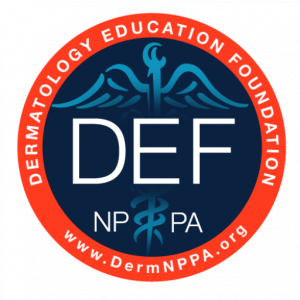Kristine Kucera, PA-C, MPAS, DHS
Acne is one of the most common skin conditions we, as dermatology providers, treat. While acne usually begins in puberty and is considered a disease of adolescence, it often presents in adults. In fact the prevalence of adult women afflicted is estimated at up to 15%.
In dermatology, spironolactone has been prescribed off-label for acne for many years, because it exerts anti-androgenic effects and is considered safe and effective. Acne treatment guidelines suggest using “anti-androgenic” agents in the management of acne in women to specifically target to the androgenic pathogenic nature of acne. The safety of spironolactone has been well established in the treatment of acne. In general, no routine lab work is required until the age of 50. Until recently, and despite increasing interest in the use of spironolactone for acne, efficacy data from controlled trials has been limited.
In May, the British Medical Journal published results of a phase 3, double blind, randomized controlled trial designed to assess the effectiveness of oral spironolactone for acne vulgaris in adult women. The conclusions showed acne improved more with spironolactone than with placebo, and it is a useful alternative to oral antibiotics for women with acne. This study is especially interesting because the patients who were included in the study were considered candidates for oral antibiotic therapy; considering oral spironolactone instead represents a significant shift in prescribing patterns for this patient population.
More well-designed clinical trials are needed to explore the efficacy of spironolactone in the treatment of female patients with acne. The data in this study are especially meaningful for those of us who have been using spironolactone in our practices, as the findings are consistent with the anecdotal results we have been observing for many years.
The full BMJ article is available online.
Kristine Kucera, PA-C, MPAS, DHS, is Assistant Clinical Professor, University of Texas Southwestern, Medical Center PA Program, Dallas, TX. She is a member of the DEF Advisory Council.
References:
https://www.aad.org/media/stats-numbers
MORE ABOUT THE STUDY
Who was enrolled?
Women 18 years or older with facial acne for more than 6 months deemed eligible for oral antibiotics. A total of 176 women receiving spironolactone and 166 controls were evaluated.
What was the active treatment dose?
Participants were randomly assigned (1:1) to either 50mg/day spironolactone or placebo until week six, increasing to 100mg/day spironolactone or placebo until week 24. Participants could continue using topical treatment.
What were the results?
Patient reported acne improvement was not significantly different at week 12; significant difference was noted at week 24 (82% for treatment v 63% for placebo). Nineteen percent of active treatment patients achieved IGA treatment success at week 12, compared to 6% of controls.
What about adverse events?
No serious adverse reactions were reported. Adverse reactions were slightly more common in the spironolactone group with more headaches reported (20% v 12%; p=0.02).
— BMJ 2023;381:e074349
